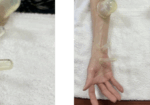Cursos CEU en vivo para terapeutas ocupacionales: la guía definitiva para el aprendizaje y el crecimiento
archivado en Sin categoría
Introducción a los cursos CEU en vivo
La educación continua es una piedra angular del desarrollo profesional en el cuidado de la salud y, para los terapeutas ocupacionales, no es solo una recomendación: a menudo es un requisito. Cursos CEU en vivo para terapeutas ocupacionales Proporcionar el equilibrio perfecto entre aprendizaje estructurado, interacción entre pares y capacitación práctica del que a menudo carecen los módulos en línea a su propio ritmo.
Ya sea que sea un recién graduado que busca perfeccionar sus habilidades o un profesional experimentado que busca mantenerse actualizado con las últimas técnicas, los cursos CEU en vivo pueden ayudarlo a ampliar sus conocimientos y aumentar su confianza en la práctica clínica.

¿Qué son los cursos CEU en terapia ocupacional?
CEU significa Unidades de Educación ContinuaEstos cursos garantizan que los terapeutas ocupacionales se mantengan al día con las nuevas investigaciones, técnicas de tratamiento y mejores prácticas. Cada curso otorga créditos que pueden aplicarse a los requisitos de renovación de la licencia estatal.
¿Por qué los terapeutas ocupacionales necesitan formación continua?
La terapia ocupacional evoluciona constantemente con nuevas intervenciones basadas en la evidencia. Los CEU permiten a los terapeutas:
- Cumplir con las leyes de licencias.
- Mejore los resultados de los pacientes con prácticas actualizadas.
- Explora áreas especializadas como pediatría, geriatría o terapia de mano.
- Mejorar la credibilidad profesional y las oportunidades de carrera.
Beneficios de los cursos presenciales de CEU para terapeutas ocupacionales
Interacción en tiempo real con los instructores
A diferencia de los cursos pregrabados, los CEU en vivo le permiten hacer preguntas y recibir comentarios inmediatos, lo que profundiza su comprensión de conceptos complejos.
Oportunidades de networking con compañeros
Estos cursos a menudo reúnen a terapeutas de diferentes especialidades, creando oportunidades para intercambiar conocimientos, compartir desafíos e incluso colaborar profesionalmente.
Desarrollo de habilidades prácticas
Para las técnicas que requieren práctica, como la terapia manual, la entablillado o la integración sensorial, los cursos en vivo brindan demostraciones prácticas invaluables.
Comparación de opciones de CEU presenciales y en línea
Flexibilidad y accesibilidad
- CEU en línea:Estudia en cualquier momento y en cualquier lugar.
- CEU en vivo:Ofrecer estructura y rendición de cuentas.
Diferencias de costo y valor
Si bien las opciones en línea pueden ser más económicas, los cursos presenciales a menudo brindan valor agregado en el dominio de habilidades y tutoría directa.
¿Qué opción se adapta a tu estilo de aprendizaje?
Si le interesa la interacción, la retroalimentación y las demostraciones prácticas, los CEU en vivo son la mejor opción.
Temas populares en los cursos presenciales de CEU para terapeutas ocupacionales
Terapia de mano y habilidades motoras finas
Entrenamiento especializado en férulas, rehabilitación de extremidades superiores y recuperación de habilidades motoras finas.
Terapia ocupacional pediátrica
Aprenda estrategias para trabajar con niños que tienen retrasos en el desarrollo, autismo o trastornos del procesamiento sensorial.
Rehabilitación geriátrica
Adquiera experiencia en prevención de caídas, atención de la demencia y entrenamiento de movilidad.
Rehabilitación neurológica y cognitiva
Manténgase actualizado sobre la rehabilitación de accidentes cerebrovasculares, la recuperación de lesiones cerebrales traumáticas y las intervenciones de memoria.
Cómo elegir el curso CEU adecuado
Acreditación y requisitos estatales
Verifique siempre que el curso esté reconocido por la junta de licencias de su estado.
Experiencia y credenciales del instructor
Busque instructores con experiencia clínica en el mundo real y sólidos antecedentes académicos.
Reseñas de cursos y comentarios de exalumnos
Verifique los comentarios de los participantes anteriores para garantizar la calidad y la relevancia.
Las mejores plataformas que ofrecen cursos presenciales de CEU para terapeutas ocupacionales
- AOTA (Asociación Americana de Terapia Ocupacional) – El estándar de oro para la educación TO.
- HandTherapyAcademy.com – Conocido por sus sesiones interactivas de alta calidad.
- Programas universitarios y hospitalarios – A menudo ofrecemos formación de vanguardia respaldada por investigaciones.
Obtenga más información sobre la acreditación CEU en el sitio web oficial de AOTA.
Consejos para maximizar el aprendizaje en cursos presenciales de CEU
- Prepárese antes de asistir – Revise los materiales del curso con antelación.
- Tome notas de manera efectiva – Utilice viñetas y resalte las técnicas clave.
- Aplicar el conocimiento en la práctica diaria – Reforzar el aprendizaje aplicando inmediatamente nuevas estrategias con los pacientes.
Preguntas frecuentes sobre los cursos presenciales de CEU para terapeutas ocupacionales
P1. ¿Cuántos CEU necesitan los terapeutas ocupacionales por año?
Los requisitos varían según el estado, pero la mayoría requiere entre 12 y 24 horas de CEU al año.
P2. ¿Son los cursos CEU presenciales más caros que los online?
Sí, en general, pero la inversión suele dar sus frutos mediante el dominio de habilidades y la creación de redes de contactos.
P3. ¿Los cursos presenciales de CEU se contabilizan para la renovación de la licencia?
Por supuesto, siempre que estén acreditados por un organismo reconocido como AOTA.
P4. ¿Cómo puedo encontrar los próximos talleres presenciales de CEU cerca de mí?
Consulta asociaciones profesionales, eventos universitarios y plataformas de educación continua.
P5. ¿Los empleadores reembolsan los costos de los cursos CEU?
Muchas organizaciones de atención médica ofrecen reembolsos; consulte siempre con su departamento de Recursos Humanos.
P6. ¿Puedo combinar CEUs presenciales y en línea para cumplir con mis requisitos?
Sí, la mayoría de las juntas aceptan una combinación, pero consulte las pautas específicas de cada estado.
Conclusión: Cómo impulsar tu carrera profesional con cursos CEU presenciales
Cursos CEU en vivo para terapeutas ocupacionales Son más que un simple requisito: son una poderosa herramienta para el crecimiento, la innovación y el avance profesional. Ofrecen oportunidades de networking, desarrollo de habilidades prácticas y retroalimentación en tiempo real que las opciones en línea no siempre pueden igualar. Al invertir en educación presencial, no solo cumples con los requisitos de la licencia, sino que también aumentas tu impacto profesional.
Más para leer
Intervenciones terapéuticas y contraindicaciones de la ventosaterapia
Por Kaylen Kallander La terapia con ventosas se utiliza para aplicar presión negativa en una zona localizada de dolor muscular o neurológico para aliviar la presión sobre los nervios y aumentar el flujo sanguíneo a la zona afectada. Esta modalidad se utiliza habitualmente en deportistas, pero también es un tratamiento frecuente en fisioterapia, terapia ocupacional o terapia de manos. Mientras que la terapia con ventosas…
Leer másFracturas de muñeca y consumo de marihuana: ¿Cuáles son las complicaciones?
Título: Consumo de marihuana y complicaciones en la consolidación tras una fractura de radio distal de muñeca. Artículo: Livesey, MG, Bains, SS, Stern, JM, Chen, Z., Dubin, JA, Monárrez, R., … e Ingari, JV (2025). Consumo de cannabis en pacientes con fracturas de radio distal: ¿un momento de unidad? Hand, 20(2), 263-268. El impacto del consumo de tabaco…
Leer másEl estiramiento solo puede cambiar la forma del hueso P1 en pacientes con camptodactilia
Woo Hong, S. Kim, J., Sang Kwon, O., Ho Lee, M., Sik Gong, H., Hyun Baek, G., (2019). Remodelación radiográfica de la cabeza de la falange proximal mediante un ejercicio de estiramiento en pacientes con camptodactilia. J Hand Surg Am, 1.e1-1.e10 The Skinny - La camptodactilia es una contractura en flexión congénita y no traumática de la PIP en dedos distintos de...
Leer más¿Qué es mejor para la enfermedad de DeQuervain: la férula o la inyección?
Revisión rápida Cavaleri, R., Schabrun, SM, Te, M. y Chipchase, LS (2016). Terapia de mano versus inyecciones de corticosteroides en el tratamiento de la enfermedad de De Quervain: una revisión sistemática y un metanálisis. Revista de terapia de manos: revista oficial de la Sociedad Estadounidense de Terapeutas de Manos, 29 (1), 3–11. https://doi.org/10.1016/j.jht.2015.10.004 The Skinny: La tenosinovitis de DeQuervain es una inflamación tenosinovial estenosante que afecta…
Leer más¡Regístrese para recibir actualizaciones directamente en su bandeja de entrada!
Regístrese con nosotros y le enviaremos publicaciones periódicas en el blog sobre todo lo relacionado con la terapia de manos, avisos cada vez que subamos nuevos videos y tutoriales, junto con folletos, protocolos y otra información útil.






